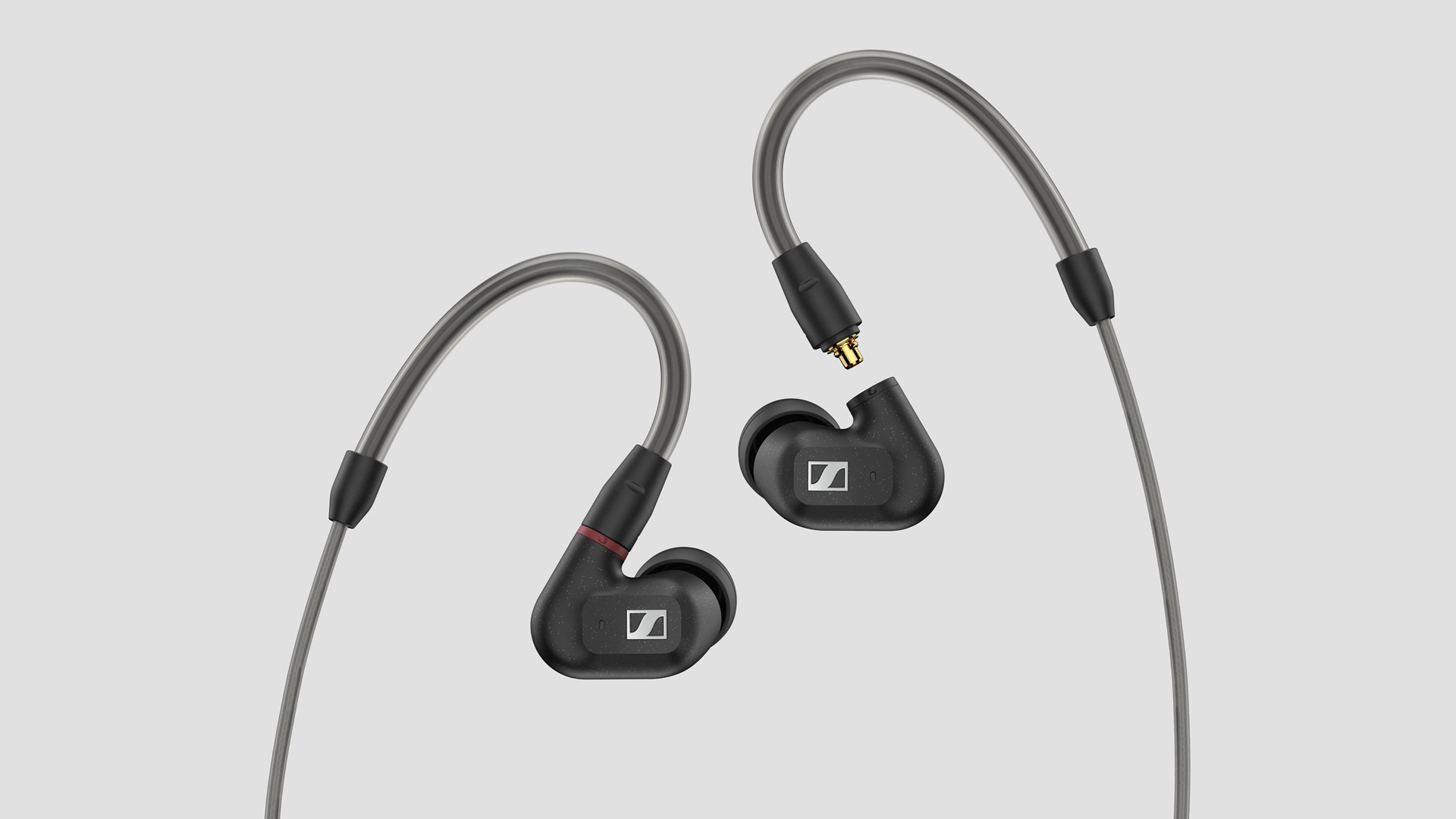In a headphones market that revels in innovative features such as true wirelessness, active noise-cancelling and voice control, the spec sheet for a pair of wired earbuds can seem rather prosaic – like a Henry vacuum cleaner in a field of cordless Dysons.
But such features have little to do with sound quality, and in the context of performance-per-pound value, wired models usually have the advantage over their wireless peers.
The Sennheiser IE 300 are the latest wired earbuds from the German brand, and despite not ticking some of the boxes in terms of popular features, there’s plenty to talk about where technical design and performance is concerned.
Build and comfort
Sennheiser says every component inside these lightweight (4g without cable) in-ear headphones has been carefully tuned to produce optimal performance, from a low resonance membrane foil to the resonator chamber, which is designed to compensate for the masking effects of trapped air in the ear canal with the buds in use.
Sennheiser IE 300 tech specs
Finishes x1
Cable length 1.25m
Eartips 3x memory foam, 3x silicone
Weight 4g (without cable)
The company has refined the 7mm ‘Extra Wide Band’ drive unit also found in the IE 800, as well as the chamber-within-a-chamber structure that helps manage airflow in an effort to produce a defined bass and equally satisfying midrange.
Its pro audio-inspired design is most obvious in the quality of its detachable cable; the inclusion of memory foam eartips in addition to silicone (three sizes of each are provided); and the availability of optional balanced (2.5mm or 4.4mm) cables. Everything from the earbud casing’s glitter-speckled finish to the thick 1.2m cable, which has been reinforced by para-aramid fibre for its durable characteristic, is an illustration of the IE 300’s build quality, too.
While the compact, hard-shell carry case doesn’t exude quite the same luxury as the earbuds, it is pocket-friendly and hardy, and undoubtedly a practical accessory. The same could be said for an in-line remote, the absence of which is a small negative mark here.
The earbud housings are practically compact too, and while a little fiddling is required to bend the thicker top part of the cable around your ears, when they’re in, they stay in – and you’d be just as likely to remove them from your ears due to interruption from a natural disaster than because of any discomfort. When it comes to physical build and ergonomic comfort, Sennheiser’s formidable reputation has been maintained here.
Sound
What’s less certain with Sennheiser earbuds is the sound character we’re going to be met with. The company has nailed class-leading insight and tonal neutrality in countless models, but has also shown an inclination towards richer, fuller and not so universally appealing sonic signatures. Unfortunately with the IE 300, it’s more a case of the latter.
The IE 300 make a great first impression, producing the depth of bass, frequency-wide solidity and general scale of sound that is hard not to be impressed by from such tiny units. We play Mogwai’s Ceiling Granny and there’s meat and grubbiness behind the oppressive guitar lines, not to mention hefty sting to the blistering electric squeals. The Sennheiser’s low-end weight, which isn’t particularly agile but not exactly ponderous either, can really anchor a song that warrants it in ways earbuds rarely do, such as LNZNDRF’s Barton Springs At Dusk.
The lows are rather overstated, though, stealing the spotlight like a lead singer in a band and relegating the treble to the role of the drummer at the back of the stage. The varied instrumental that rides above the bedrock of deep, uncompromising bass in the 20-minute track – the keys, percussion and series of kaleidoscopic synths – is somewhat muted in comparison. Richness at the low-end comes at the expense of some midrange crispness, shedding excitement as a consequence.
Meanwhile, the class leaders at this level, the Award-winning Shure Aonic 3 (£179, $199), set a better example, trading the Sennheiser’s impressive richness for a more agreeable neutral tonality. They may not match the IE 300’s bass depth or the midrange solidity – these Sennheisers sound wonderfully full and smooth with voices – but they offer greater clarity, crispness, agility and, in turn, a snappier presentation.
Play the vocal-led Cassandra Jenkins’ Michelangelo, and while the Sennheisers showboat with a bold soundfield filled with lush-sounding acoustic guitars and warm, solid vocals, the intricacies of Jenkins’ delivery and the fine instrumental textures are overlooked in comparison.
The Shures are notably more rhythmically and dynamically proficient. Playing the first track of Black Country, New Roads’ debut album, Instrumental, they offer the more compelling listen; cymbals are convincingly cutting as opposed to softened, there’s greater texture to the oboe and trombone melodies, and the drum rhythm is tighter and faster, propelling the track’s rightful frenetic energy.
They focus on every musical strand, even as new ones come in. It would be unfair to call the Sennheisers boring or vague, but they are notably less astute and more subdued than their more talented, more affordable rival.
Verdict
Without having to concern itself with contemporary features, Sennheiser has been able to prioritise the fundamentals for the IE 300 – build and sound quality. It nails the former, and there’s plenty to like in the latter: they’re bolder and more authoritative-sounding than most, with majestic bass depth and wonderfully rich vocals among the highlights.
However, they aren’t convincing all-rounders, and just fall short of the transparency and entertainment of the more affordable, class-leading competition at this level.
SCORES
- Sound 3
- Comfort 5
- Build 4
MORE:
Read our guide to the best earbuds
Read our Shure Aonic 3 review
